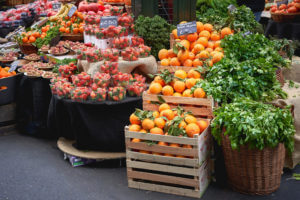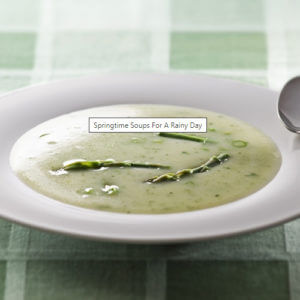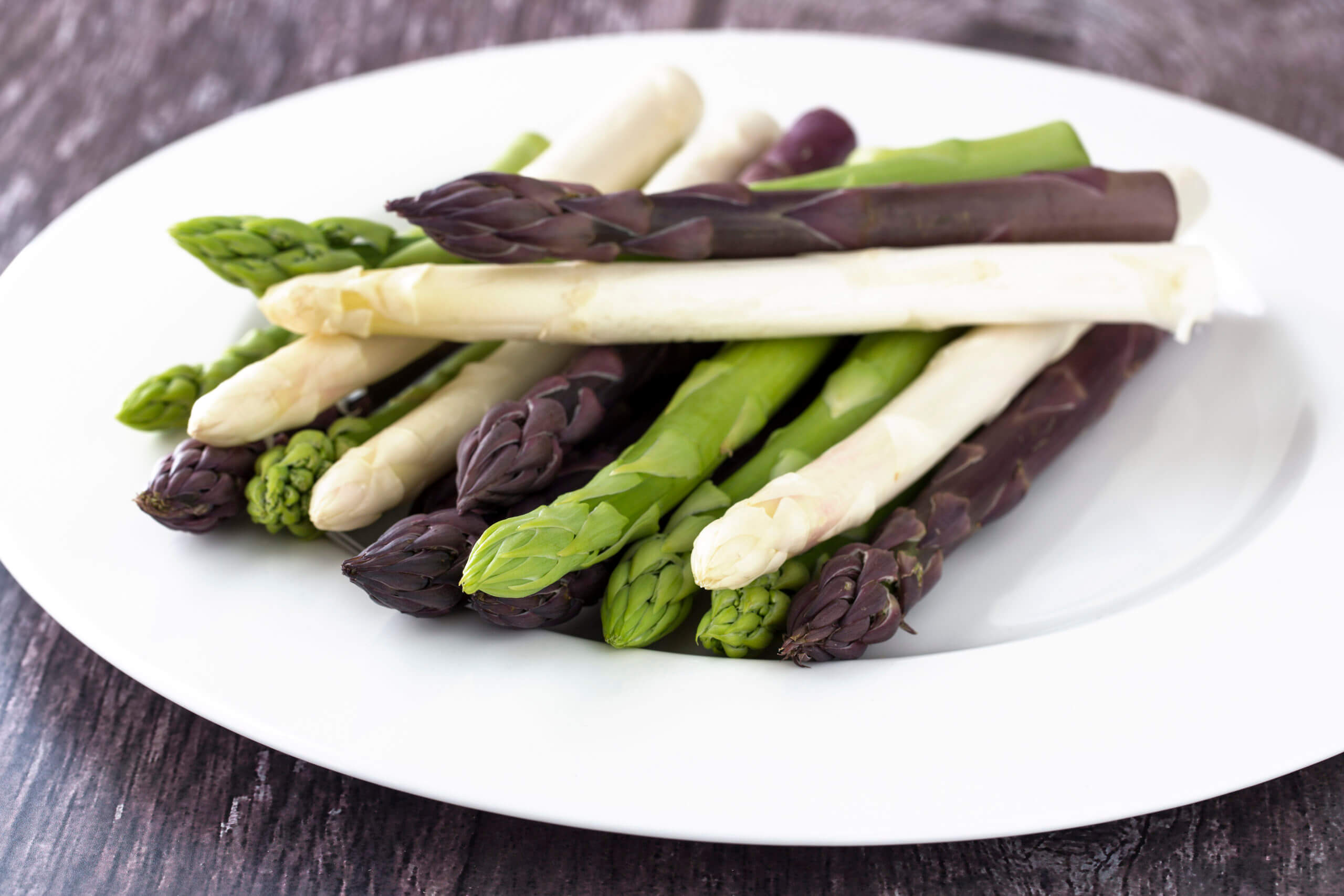Ingredient Spotlight – Asparagus

Spring is right around the corner…can you smell it, or rather, taste it? The change of seasons is always a fun time for chefs to peruse the produce aisle at their local markets, or forage for local ingredients near their homes. Of all the seasons, spring is one of the favorite among chefs and home cooks alike. One of the more popular spring vegetables making a resurgence this time of year is asparagus.
Cooks love to work with these long, pointy spears as they bring a taste of freshness to tables. Asparagus grows throughout the world, which does make it timeless in a sense, but they thrive in climates where the ground freezes, making spring thaw the perfect stage for spears to emerge from the ground. They are harvested once they reach approximately 6-8” tall. Growers must be patient, however, as it can take up to 4 years to begin producing edible spears. It’s this lengthy anticipation that helps make asparagus a bit of a celebrity, which can be attributed to its elevated price as a seasonal feature in dishes.
Source It
Asparagus is mainly harvested from March through June, depending on the region. A farmer’s market or fresh produce market is a great source for fresh-from-the-ground shoots. In some  areas, you may be able to forage for asparagus along roadsides or in fields. If a store is your only option, search out those who source locally for the freshest cuts possible.
areas, you may be able to forage for asparagus along roadsides or in fields. If a store is your only option, search out those who source locally for the freshest cuts possible.
When looking for asparagus, choose shoots that are plump and straight. The tips should be rather compact and stiff. Whether you like thick or thin spears is a matter of personal taste. Thicker tend to be more bitter, while the thinner stalks are usually more on the sweet-side.
Store It
Once you get your stash of green gold home, cut about one inch off the bottom of each spear. Stand the bunch in a jar or glass filled with about one inch of water. You may want to keep the rubber band on to hold the bunch together, but that is not a necessity. This storage method keeps your spears fresh for several days; but remember to change the water every other day or so, until you’re ready to cook it.
Clean It
When you are ready to cook, remove your still fresh asparagus from the water and rinse each spear under cool water to remove any remaining dirt or grit. You can cut off another portion of the bottom of each stalk or you can break it. When breaking the stalk hold both ends and bend. The stalk will automatically break at the tender point. You can then toss the bottoms in the trash or save them for a recipe like soup, where they will process down yet still add much needed flavor.
Prepare It
 Thicker spears are generally left whole and are most commonly grilled, steamed or roasted. However, you can incorporate the more delicate, thinner spears into soups or salads, or toss with pasta or in a stir-fry as they may become soggy or mushy when cooked, while heartier stalks can hold up to cooking. Many chefs like to prepare a hand-made hollandaise sauce to pour over heated dishes-which is also a great opportunity to practice sauce techniques, while a vinaigrette is a great choice for chilled spears. The most important thing that chefs and home cooks should be mindful of when preparing asparagus, is the size of the stalk and to choose a cooking application that works well with it.
Thicker spears are generally left whole and are most commonly grilled, steamed or roasted. However, you can incorporate the more delicate, thinner spears into soups or salads, or toss with pasta or in a stir-fry as they may become soggy or mushy when cooked, while heartier stalks can hold up to cooking. Many chefs like to prepare a hand-made hollandaise sauce to pour over heated dishes-which is also a great opportunity to practice sauce techniques, while a vinaigrette is a great choice for chilled spears. The most important thing that chefs and home cooks should be mindful of when preparing asparagus, is the size of the stalk and to choose a cooking application that works well with it.
Team Green, Team White…or Team Purple
When shopping for asparagus, you may notice that there is more than the common green variety we are most familiar with. There are also more unique white and purple versions. And, while they are all asparagus, there are very distinct differences between them.
Green and purple varieties grow above ground, whereas white asparagus grows completely underground. As the spears grow, they’re covered in a thick mound of dirt or black plastics so they are not exposed to sunlight. This technique prevents them from producing the green-machine, chlorophyll. Color is only skin deep in the purple variety, however, as the underflesh is a pale green to creamy white.
There is also a difference in taste between the colors. Purple asparagus is the least fibrous of the other varieties, but also the most sweet. It contains twenty percent more sugar than even the next sweetest partner, white. In fact purple asparagus is so tender it can be eaten raw. White asparagus has a more delicate and sweeter flavor than its green cousin. White asparagus also tends to be thicker and more fibrous so when cleaning these pale stalks it’s probably best to peel them a bit with a vegetable peeler. These white beauties can, however, be prepared in all the same manners as their green or purple counterparts and actually look equally as dazzling under a blanket of golden hollandaise.
Whether you choose white, green or purple, just be sure to choose asparagus this spring, as this tender delicacy is freshest this time of year.


